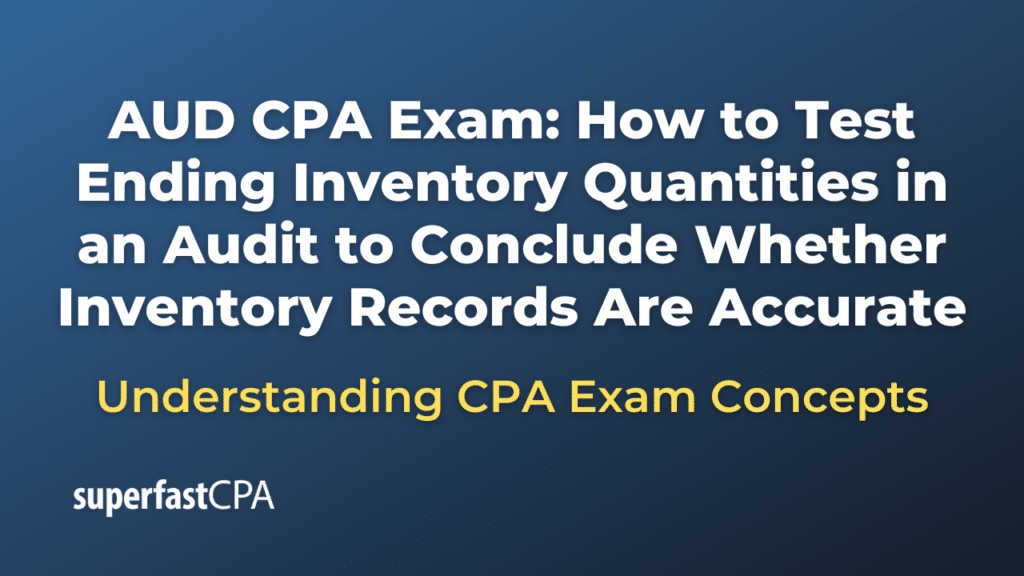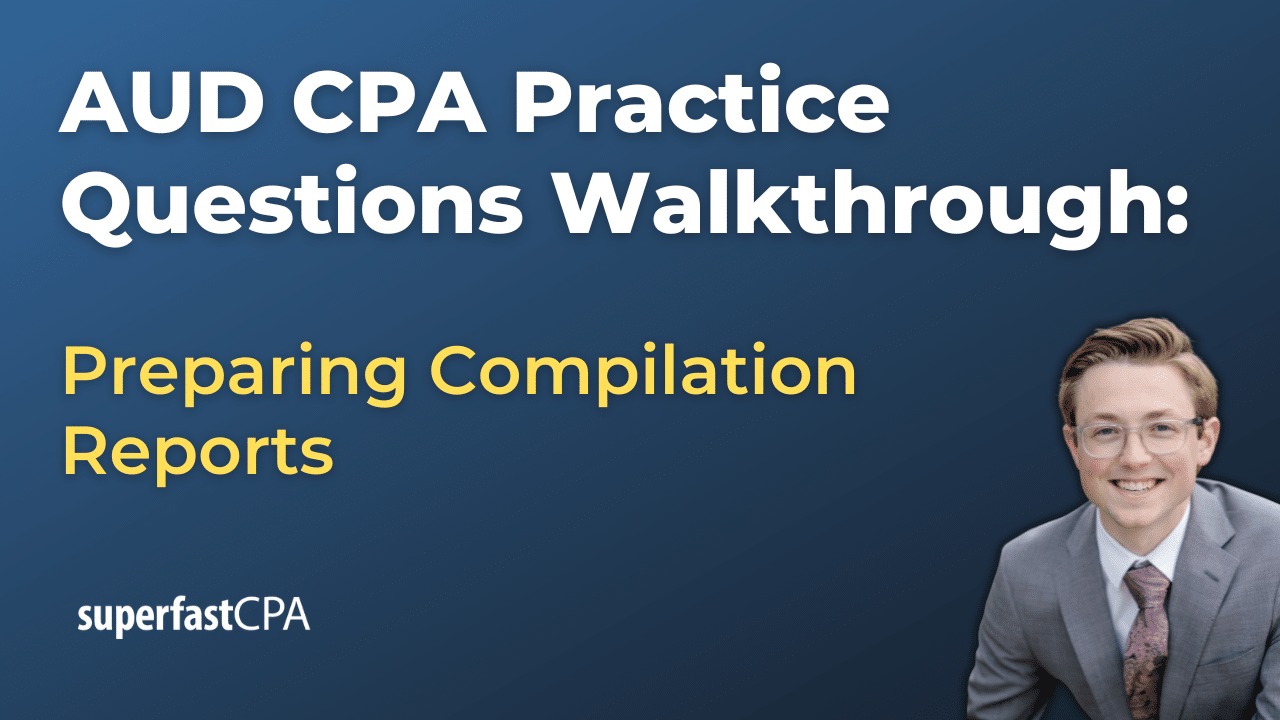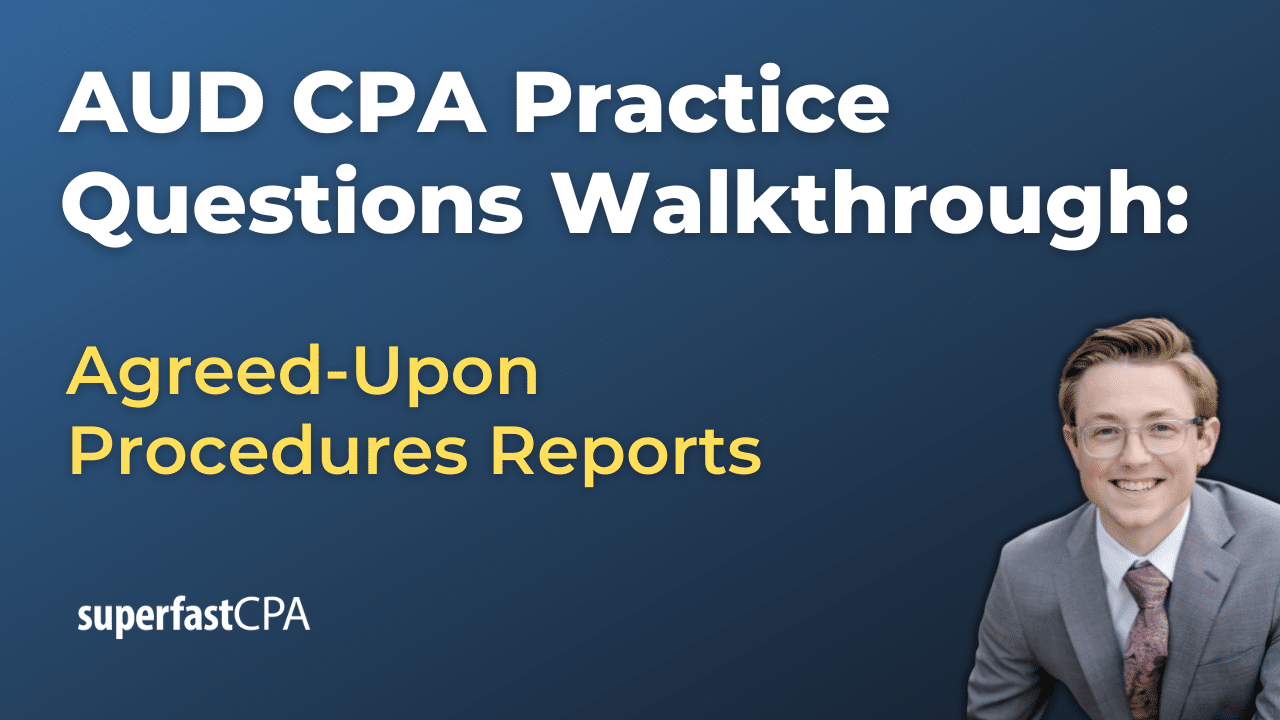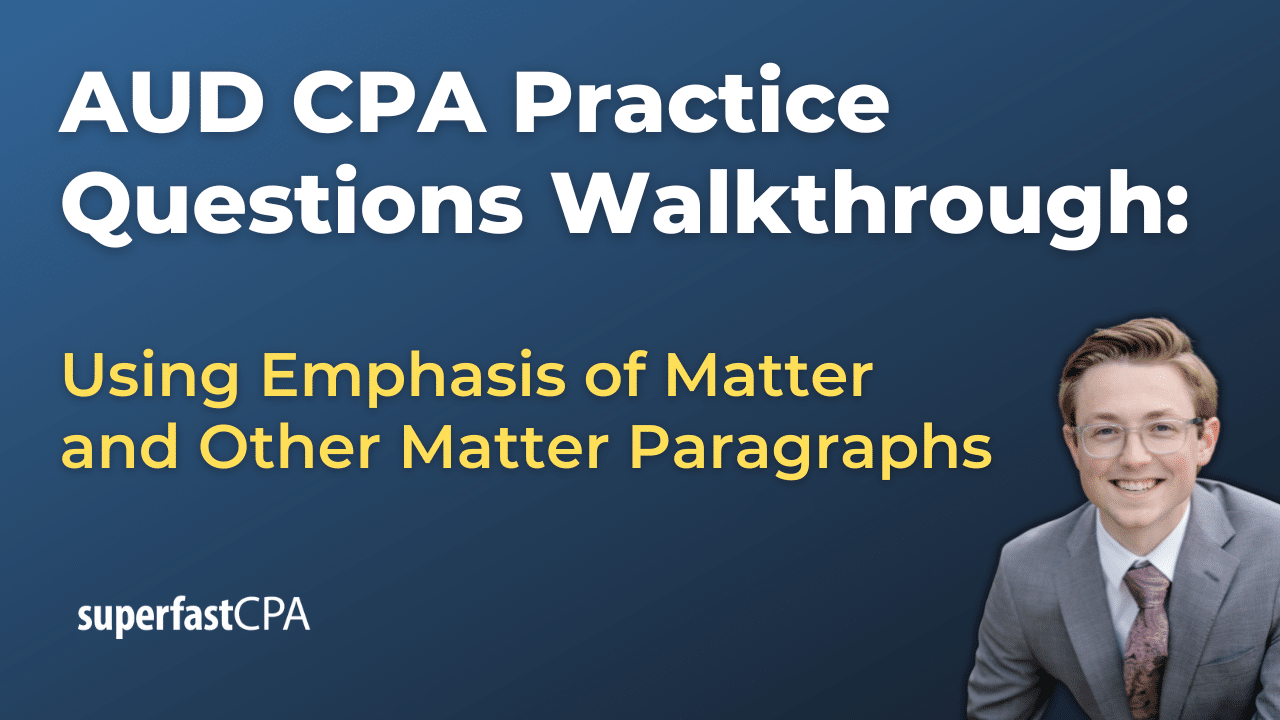Introduction
Purpose of Inventory Testing in Audits
Importance of Inventory Valuation in Financial Statements
In this article, we’ll cover how to test ending inventory quantities in an audit to conclude whether inventory records are accurate. Inventory is a critical component of a company’s financial statements, often representing a significant portion of current assets. Accurate valuation of inventory is essential for determining the cost of goods sold (COGS) and, ultimately, the company’s profitability. Misstatements in inventory valuation can lead to incorrect financial reporting, which may affect decision-making by investors, creditors, and other stakeholders.
The value of inventory directly influences the balance sheet, where it is recorded as an asset, and the income statement, where it affects COGS and gross profit. Therefore, auditors must ensure that the inventory is valued correctly to reflect the true financial position of the entity.
Overview of Audit Objectives Related to Inventory: Existence, Completeness, and Accuracy
When auditing inventory, the primary objectives are to verify the existence, completeness, and accuracy of the inventory records.
- Existence: The auditor must confirm that the inventory recorded in the financial statements physically exists at the balance sheet date. This involves physical inspection and verification of inventory quantities and conditions.
- Completeness: The auditor needs to ensure that all inventory owned by the company is recorded in the financial statements. This includes checking for unrecorded inventory and ensuring that there are no omissions.
- Accuracy: The valuation of inventory must be accurate, with correct quantities, conditions, and costs assigned to each inventory item. This also involves verifying that the inventory is properly classified and presented in accordance with applicable accounting standards.
Achieving these audit objectives is vital to ensure that the inventory balances reported in the financial statements are free from material misstatement.
Relevance to the AUD CPA Exam
Why Understanding Inventory Testing is Critical for the Exam
Inventory testing is a crucial aspect of auditing that frequently appears on the AUD CPA exam. Given its significant impact on financial statements, a thorough understanding of how to test ending inventory quantities is essential for aspiring CPAs. Candidates need to grasp not only the theoretical aspects of inventory testing but also the practical application of these concepts in real-world scenarios.
In the exam, candidates may encounter questions related to the procedures for verifying inventory existence, assessing the condition of inventory, and reconciling inventory records with physical counts. Mastery of these topics is essential for answering exam questions accurately and efficiently.
Brief Mention of the Topics Covered in the Article
This article will provide an in-depth examination of the procedures and considerations involved in testing ending inventory quantities. Topics will include the planning and execution of inventory counts, confirming inventory held by third parties, evaluating the existence and condition of inventory, and reconciling inventory records with count results. By the end of this article, readers will have a comprehensive understanding of the audit procedures related to inventory testing and be better prepared for the AUD CPA exam.
Understanding the Importance of Testing Ending Inventory
Role of Inventory in Financial Statements
Impact on Cost of Goods Sold and Overall Financial Health
Inventory plays a pivotal role in the financial statements of any business that deals with the production, purchase, or sale of goods. One of the key areas impacted by inventory valuation is the Cost of Goods Sold (COGS), which is directly tied to the company’s profitability. COGS is calculated by adding the beginning inventory to purchases made during the period and subtracting the ending inventory. Therefore, the accuracy of the ending inventory figure is crucial to determining the correct COGS.
An overstatement of ending inventory will result in an understatement of COGS, thereby inflating gross profit and net income. Conversely, an understatement of ending inventory will lead to an overstatement of COGS, which decreases gross profit and net income. Both scenarios can mislead stakeholders about the company’s financial performance and health, potentially resulting in poor decision-making by management, investors, and creditors.
Additionally, inventory is reported as a current asset on the balance sheet. An inaccurate inventory valuation can distort the financial position of the company, affecting key financial ratios, such as the current ratio and the quick ratio, which are used to assess liquidity and financial stability. Therefore, ensuring that the ending inventory is accurately reflected in the financial statements is essential for presenting a true and fair view of the company’s financial condition.
Risks Associated with Inventory
Common Risks Like Obsolescence, Misstatement, and Fraud
Inventory is susceptible to various risks that can lead to misstatements in the financial statements. Some of the common risks include:
- Obsolescence: Inventory items that become obsolete due to changes in technology, market demand, or product lifecycle can significantly lose value. If such items are not written down to their net realizable value, the inventory will be overstated, leading to an inaccurate financial portrayal.
- Misstatement: Misstatements in inventory can arise from errors in counting, pricing, or classifying inventory items. These errors can occur due to inadequate internal controls, human error, or system issues, and can lead to material misstatements in the financial statements.
- Fraud: Inventory is often targeted in fraudulent schemes, such as inflating inventory quantities or values to enhance financial performance artificially. Fraudulent inventory practices can result in significant financial losses and damage to the company’s reputation.
How These Risks Affect the Audit Approach
The presence of these risks necessitates a robust audit approach to ensure that the inventory is fairly presented in the financial statements. The auditor must assess the risk of material misstatement related to inventory and design appropriate audit procedures to address these risks.
For example, if there is a high risk of obsolescence, the auditor might perform more detailed testing of inventory aging reports and evaluate management’s process for identifying and valuing obsolete inventory. If fraud risk is identified, the auditor may increase the extent of physical observation procedures, implement more rigorous inventory count procedures, and perform surprise inventory counts to detect any anomalies.
Furthermore, the auditor must also consider the adequacy of the client’s internal controls over inventory. Weak internal controls increase the likelihood of misstatements, requiring the auditor to perform more substantive testing, including physical inventory observations, cut-off testing, and reconciliation of inventory records with physical counts.
By understanding these risks and tailoring the audit approach accordingly, the auditor can obtain reasonable assurance that the ending inventory is accurately stated, thus ensuring the reliability of the financial statements.
Inventory Counting Procedures
Planning the Inventory Count
Understanding the Timing and Location of the Count
Effective planning of the inventory count is crucial to ensure that the audit procedures are performed efficiently and effectively. The timing of the inventory count is a key consideration. Most companies conduct physical inventory counts at the end of their fiscal year; however, some may perform counts at interim periods or on a cyclical basis. The auditor must understand the timing of the count to align audit procedures with the client’s schedule, ensuring that the inventory quantities counted reflect the amounts reported in the financial statements.
The location of the inventory count is equally important, particularly for companies with multiple storage sites, warehouses, or consigned inventory. The auditor must determine which locations will be included in the count and whether any inventory is held at third-party sites. Understanding the geographical spread of inventory helps in allocating audit resources effectively and deciding whether the audit team needs to be present at multiple locations simultaneously.
Coordination with Client and Other Auditors
Coordination with the client and, if applicable, with other auditors is a critical aspect of inventory count planning. The auditor should communicate with the client to understand their procedures for conducting the inventory count, including the methodologies for counting, recording, and reconciling inventory quantities. This communication helps the auditor identify any potential risks or areas that require special attention.
If the inventory is located in multiple locations, and other auditors are involved, the primary auditor must coordinate with them to ensure that all inventory is counted accurately and consistently. This might involve issuing specific instructions to other auditors regarding the procedures to be followed, the level of detail required, and the documentation needed for the audit file.
Additionally, the auditor should arrange for any necessary support, such as audit staff or third-party specialists, particularly if the inventory includes complex or specialized items that require expertise beyond the auditor’s general knowledge.
Physical Inventory Observation
Auditor’s Role in Observing and Participating in the Inventory Count
The physical observation of the inventory count is a fundamental part of the audit process, providing direct evidence of the existence and condition of the inventory. The auditor’s role during the inventory count includes observing the client’s count procedures, ensuring that they are followed correctly, and that the inventory is counted systematically and accurately.
The auditor should be present during the inventory count to observe the counting process, participate in the count where necessary, and perform independent counts of selected items. The auditor’s presence helps deter potential manipulation or fraud and allows the auditor to gather evidence that the inventory quantities are being accurately recorded.
Procedures for Verifying Quantities and Conditions
To verify the quantities and conditions of the inventory, the auditor typically performs test counts. This involves selecting a sample of items from the inventory records and physically counting them to compare the results with the client’s count. The auditor may also select items directly from the warehouse floor to trace back to the inventory records, ensuring that all items are properly recorded.
In addition to verifying quantities, the auditor must assess the condition of the inventory. This involves inspecting items for signs of damage, obsolescence, or other factors that may affect their value. The auditor should note any discrepancies or issues observed during the count and follow up with management to understand how these issues are addressed in the financial statements.
Dual-Purpose Testing
Performing Tests of Controls and Substantive Procedures Simultaneously
During the inventory count, the auditor can perform dual-purpose testing, which involves conducting both tests of controls and substantive procedures at the same time. This approach is efficient and allows the auditor to gather evidence on the effectiveness of the client’s internal controls over inventory while also verifying the accuracy of the inventory quantities.
For example, while observing the inventory count, the auditor might evaluate whether the client’s controls over inventory counting are operating effectively. This could include assessing the segregation of duties, the accuracy of the count sheets, and the procedures for recording count results. Simultaneously, the auditor can perform substantive tests, such as test counts, to verify that the recorded quantities are accurate.
Dual-purpose testing not only provides evidence about the reliability of the inventory count but also helps the auditor make informed decisions about the extent of further substantive testing needed. If the controls are found to be effective, the auditor may reduce the extent of additional substantive procedures; conversely, if weaknesses are identified, more extensive substantive testing may be required.
By effectively planning and executing the inventory counting procedures, the auditor can obtain reliable evidence regarding the existence, completeness, and accuracy of the inventory, ensuring that the financial statements present a true and fair view of the company’s financial position.
Testing Inventory Held by Others
Third-Party Inventory Confirmation
When and Why to Use Third-Party Confirmations
In some cases, a company’s inventory is held by third parties, such as consignees, public warehouses, or logistics providers. When inventory is held off-site by third parties, auditors must obtain sufficient and appropriate audit evidence to verify the existence and condition of this inventory. Third-party confirmations are a key audit procedure used to gather this evidence.
Third-party confirmations are particularly important when the auditor cannot physically observe the inventory or when the inventory held by others constitutes a significant portion of the total inventory balance. These confirmations provide direct evidence from an independent source, reducing the risk of material misstatement due to errors or fraud. Auditors typically request third-party confirmations as part of their substantive testing procedures to ensure that the inventory reported by the company is accurately reflected in the financial statements.
Procedures for Confirming Inventory Held by Consignees, Warehouses, and Other Third Parties
The process of confirming inventory held by third parties involves several steps:
- Identify Relevant Third Parties: The auditor first identifies all third parties holding the company’s inventory. This includes consignees, public warehouses, and any other entities responsible for storing the company’s inventory.
- Draft and Send Confirmation Requests: The auditor prepares confirmation requests, which typically include details such as the description, quantity, and location of the inventory held. These requests are sent directly to the third parties, requesting them to confirm the details of the inventory they hold on behalf of the company.
- Follow-Up on Non-Responses: If a third party does not respond to the initial confirmation request, the auditor should follow up with additional requests. Persistence is key to obtaining a sufficient number of responses to ensure the reliability of the audit evidence.
- Review and Reconcile Responses: Upon receiving the confirmations, the auditor compares the responses with the company’s inventory records. Any discrepancies between the confirmed amounts and the recorded amounts must be investigated and resolved.
- Evaluate the Results: The auditor assesses the reliability of the confirmations and the impact of the results on the audit. If the confirmations support the inventory records, the auditor can conclude that the inventory held by third parties is fairly stated. However, if significant discrepancies or non-responses are encountered, further audit procedures may be required.
Challenges and Considerations
Handling Non-Responses and Discrepancies
One of the primary challenges in third-party inventory confirmation is dealing with non-responses. When a third party fails to respond to a confirmation request, the auditor must take additional steps to obtain the necessary evidence. This may involve direct communication with the third party, requesting alternative forms of evidence (such as shipping documents or inventory reports), or performing alternative audit procedures, such as inspecting the inventory if feasible.
Discrepancies between the third-party confirmations and the company’s records also require careful investigation. The auditor must determine the cause of the discrepancy, which could range from clerical errors to more serious issues like inventory misappropriation or misstatement. Depending on the nature and extent of the discrepancies, the auditor may need to expand the scope of testing or consider the impact on the audit opinion.
Evaluating the Reliability of Third-Party Confirmations
The reliability of third-party confirmations depends on the credibility and independence of the confirming party. The auditor must evaluate whether the third party is independent of the client and whether there are any factors that might compromise the reliability of the confirmation. For example, if the third party has a close relationship with the client or if there are concerns about the third party’s internal controls, the auditor may need to perform additional procedures to corroborate the confirmation results.
In cases where the auditor questions the reliability of a third-party confirmation, alternative procedures should be considered. This could include direct observation of the inventory, review of supporting documentation, or even obtaining a second confirmation from another independent party.
By addressing these challenges and carefully considering the reliability of the audit evidence, the auditor can effectively verify inventory held by others, ensuring that the financial statements provide a true and fair view of the company’s assets.
Evaluating the Existence and Condition of Inventory
Assessing Inventory Existence
Procedures for Ensuring That Recorded Inventory Actually Exists
One of the primary objectives of inventory testing is to confirm that the inventory recorded in the financial statements actually exists. To achieve this, auditors perform several key procedures:
- Physical Inventory Observation: The most direct method of verifying inventory existence is through physical observation. Auditors attend the client’s inventory count to observe the process, ensuring that all items counted are correctly recorded in the inventory records. During this observation, auditors select a sample of items from the inventory records and trace them to their physical locations to confirm their existence.
- Inventory Reconciliation: Auditors compare the physical count results with the inventory records maintained by the client. Any discrepancies between the physical count and the recorded quantities are investigated to determine whether they result from errors, omissions, or potential fraud. The reconciliation process ensures that the recorded inventory balances accurately reflect the quantities on hand.
- Cut-Off Testing: To ensure that inventory transactions are recorded in the correct accounting period, auditors perform cut-off testing. This involves examining the timing of inventory shipments and receipts around the balance sheet date. By verifying that inventory transactions are recorded in the appropriate period, auditors can confirm the existence of inventory as of the reporting date.
- Third-Party Confirmations: For inventory held by third parties, auditors obtain confirmations to verify that the inventory exists and is properly recorded. These confirmations are particularly important when the auditor cannot directly observe the inventory, such as when it is stored in off-site warehouses.
Use of Audit Sampling in Inventory Testing
Audit sampling is a common technique used by auditors to efficiently test inventory existence when dealing with large volumes of inventory items. Sampling allows the auditor to select a representative subset of the inventory for detailed testing, rather than examining every single item. The auditor uses statistical or non-statistical sampling methods to determine the sample size and select items for testing.
- Statistical Sampling: This method involves selecting a sample based on probability, providing a measurable level of confidence in the results. Auditors use statistical sampling to estimate the existence of inventory with a known level of precision.
- Non-Statistical Sampling: This method is based on the auditor’s judgment and experience. While it does not provide the same level of precision as statistical sampling, it can still offer sufficient assurance about inventory existence, particularly when used in combination with other audit procedures.
Sampling is especially useful when inventory includes large quantities of low-value items, where testing every item would be impractical. By applying sampling techniques, auditors can draw conclusions about the entire inventory population based on the results of the sample.
Evaluating Inventory Condition
Importance of Assessing Obsolescence and Damage
In addition to verifying the existence of inventory, auditors must also assess its condition. The condition of inventory has a direct impact on its valuation, as damaged or obsolete inventory may need to be written down to its net realizable value. Failure to properly account for such inventory can lead to overstatement of assets and understatement of expenses, distorting the financial statements.
Obsolescence occurs when inventory items are no longer usable or saleable due to changes in technology, market demand, or other factors. Damaged inventory may result from improper storage, handling, or environmental factors. Both conditions can significantly reduce the value of inventory, making it crucial for auditors to evaluate the condition of inventory items during the audit.
Techniques for Evaluating Inventory Condition During Physical Counts
During physical inventory counts, auditors employ several techniques to evaluate the condition of inventory:
- Visual Inspection: The auditor visually inspects inventory items for signs of damage, wear, or deterioration. This might include checking for physical damage, rust, expiration dates, or other indicators that the inventory is not in sellable condition. The auditor notes any items that appear damaged or obsolete and follows up with management to determine how these items are valued in the financial statements.
- Aging Analysis: Auditors often perform an aging analysis of inventory to identify items that have been in stock for an extended period. Older inventory is more likely to be obsolete, especially if it has not been sold within a typical turnover period. The auditor reviews the aging report and discusses with management any plans for disposing of or writing down obsolete inventory.
- Comparison with Market Trends: The auditor may compare the inventory’s condition and turnover rates with industry standards and market trends. For example, if certain products are becoming obsolete due to new technology or declining market demand, the auditor may question whether the client has appropriately valued these items.
- Inquiry and Documentation Review: The auditor inquires with management about the procedures for identifying and valuing damaged or obsolete inventory. Additionally, the auditor reviews documentation, such as write-down records and management’s assessments, to verify that inventory is appropriately valued according to its condition.
By thoroughly assessing both the existence and condition of inventory, auditors can provide assurance that the inventory reported in the financial statements is not only present but also accurately valued, reflecting its true economic worth.
Reconciling Inventory Records with Count Results
Understanding Inventory Records
Types of Records: Perpetual vs. Periodic Inventory Systems
Accurate inventory records are crucial for ensuring that the inventory balances reported in the financial statements are correct. The way a company maintains its inventory records can significantly influence how auditors approach the reconciliation of inventory counts with recorded amounts. There are two primary types of inventory record-keeping systems: perpetual and periodic.
Perpetual Inventory System
In a perpetual inventory system, inventory records are updated continuously as transactions occur. This means that every time inventory is purchased, sold, or otherwise altered, the inventory records are immediately adjusted to reflect these changes. The perpetual system provides real-time information about inventory levels, making it easier to monitor stock levels and detect discrepancies quickly.
- Advantages: The primary advantage of the perpetual system is that it offers up-to-date information, which can be valuable for decision-making and inventory management. It also facilitates more frequent reconciliation, as the system provides detailed records that can be compared against physical counts at any time.
- Audit Considerations: When auditing a company using a perpetual inventory system, auditors can perform interim inventory counts and compare these with the system’s records. Any discrepancies found can be investigated immediately, and auditors can assess whether the system’s internal controls are effective in maintaining accurate inventory records.
Periodic Inventory System
In a periodic inventory system, inventory records are not updated continuously. Instead, the inventory levels are determined at specific intervals, typically at the end of an accounting period, through a physical count. The periodic system calculates the cost of goods sold by subtracting the ending inventory (as determined by the physical count) from the sum of the beginning inventory and purchases made during the period.
- Advantages: The periodic system is simpler and less costly to maintain than the perpetual system, as it does not require constant updating of records. It is often used by smaller businesses or those with less complex inventory management needs.
- Audit Considerations: Auditing a periodic inventory system typically involves a more extensive review of the physical inventory count, as this count directly determines the inventory balance reported in the financial statements. Auditors must ensure that the physical count is accurate and that all transactions leading up to the count have been properly recorded. Additionally, auditors need to verify that the inventory valuation reflects any adjustments for shrinkage, damage, or obsolescence identified during the physical count.
Key Differences in Reconciliation
- In a perpetual system, reconciliation involves comparing the perpetual records to the physical counts and investigating any differences. The auditor must ensure that the perpetual system’s continuous updates accurately reflect the inventory on hand.
- In a periodic system, reconciliation focuses on verifying the accuracy of the physical count and ensuring that all inventory transactions up to the count date are correctly accounted for in the financial statements. The auditor must also verify that the ending inventory figure is used correctly in calculating the cost of goods sold.
Understanding the type of inventory record system in use is essential for auditors, as it dictates the approach to reconciling inventory records with physical count results. Whether the system is perpetual or periodic, the auditor’s objective remains the same: to ensure that the inventory reported in the financial statements is accurate and complete.
Reconciliation Process
Steps to Reconcile the Physical Count with Inventory Records
Reconciling inventory records with the results of a physical count is a critical step in the audit process. This reconciliation ensures that the inventory amounts reported in the financial statements are accurate and reflect the true quantity of inventory on hand. The reconciliation process involves the following steps:
- Compare Physical Counts with Inventory Records: The first step is to compare the quantities recorded during the physical inventory count with the quantities in the company’s inventory records. This comparison should be done item by item to identify any differences between the counted amounts and the recorded amounts.
- Identify Discrepancies: Any differences between the physical count and the inventory records need to be identified and documented. Discrepancies can arise due to several reasons, such as recording errors, theft, damage, or unrecorded inventory movements.
- Investigate Discrepancies: Once discrepancies are identified, the auditor must investigate their causes. This may involve reviewing inventory transactions, such as purchases, sales, returns, and adjustments, to determine if they were correctly recorded. The auditor might also need to look into physical factors, such as miscounts during the physical inventory, inventory stored in incorrect locations, or items that were missed during the count.
- Reconcile Differences: After investigating the discrepancies, the auditor works with the client to reconcile the differences. This could involve adjusting the inventory records to match the physical count or correcting any errors identified during the investigation. The reconciliation should be documented thoroughly to provide a clear audit trail.
- Document the Reconciliation: The final step is to document the reconciliation process, including the identified discrepancies, the results of the investigations, and the adjustments made to the inventory records. This documentation is essential for supporting the auditor’s conclusions and for future reference in case of any questions or reviews.
Investigating and Resolving Discrepancies
Investigating discrepancies between physical counts and inventory records is a key part of the reconciliation process. The auditor must determine whether the discrepancies are due to simple errors, such as miscounts or data entry mistakes, or if they indicate more serious issues, such as theft, fraud, or systemic problems in inventory management.
- Simple Errors: These might include counting mistakes, items being recorded in the wrong location, or clerical errors in inventory records. Simple errors can often be resolved by recounting the inventory or correcting the records.
- Complex Issues: Discrepancies that cannot be easily explained might indicate underlying problems such as inventory shrinkage, obsolescence, or even fraudulent activity. In these cases, the auditor may need to perform additional procedures, such as interviewing staff, reviewing surveillance records, or conducting surprise counts to gather more information.
Resolving these discrepancies is essential to ensure that the inventory balance reported in the financial statements is accurate. If significant issues are identified, the auditor must assess the impact on the financial statements and consider whether any adjustments are necessary.
Impact on Financial Statements
Adjustments Needed for Any Discrepancies Identified
Once discrepancies between the physical count and inventory records have been investigated and reconciled, the auditor must determine whether adjustments to the financial statements are necessary. Adjustments may be required to correct the inventory balance, which directly affects the cost of goods sold (COGS) and net income.
- Inventory Overstatement: If the inventory is overstated due to errors or discrepancies, the financial statements will need to be adjusted downward. This correction will increase the COGS, thereby reducing gross profit and net income.
- Inventory Understatement: Conversely, if inventory is understated, the financial statements will need to be adjusted upward, resulting in a decrease in COGS and an increase in gross profit and net income.
These adjustments ensure that the financial statements accurately reflect the company’s financial position and performance. The auditor must verify that all necessary adjustments have been made and that the inventory balance is properly reported.
Implications for the Audit Opinion
The results of the inventory reconciliation process can have significant implications for the audit opinion. If the reconciliation identifies significant discrepancies that cannot be adequately explained or resolved, the auditor may need to consider the impact on the overall audit opinion.
- Unqualified Opinion: If the discrepancies are minor and do not materially affect the financial statements, the auditor may issue an unqualified opinion, indicating that the financial statements present a true and fair view in all material respects.
- Qualified Opinion: If there are unresolved discrepancies that have a material impact on the financial statements, but the overall statements are still fairly presented, the auditor may issue a qualified opinion, highlighting the specific areas of concern.
- Adverse Opinion: If the discrepancies are so significant that they lead to material misstatements in the financial statements, the auditor may issue an adverse opinion, indicating that the financial statements do not present a true and fair view.
- Disclaimer of Opinion: In cases where the auditor is unable to obtain sufficient appropriate audit evidence to conclude on the inventory balance, they may issue a disclaimer of opinion, stating that they cannot express an opinion on the financial statements.
The auditor’s conclusion regarding inventory reconciliation directly affects the credibility of the financial statements and the level of assurance provided to users. Therefore, the reconciliation process is a critical aspect of the audit that must be conducted with diligence and thoroughness.
Conclusion
Summary of Key Points
Testing ending inventory quantities is a crucial aspect of the audit process, with significant implications for the accuracy of a company’s financial statements. Inventory often represents a substantial portion of a company’s assets, and any misstatements in inventory can lead to material errors in the financial reports. Throughout the audit, the auditor’s objective is to ensure that the inventory reported on the balance sheet actually exists, is complete, and is accurately valued.
Key areas of focus include:
- Planning the Inventory Count: Proper planning ensures that the inventory count is conducted efficiently and that all significant locations and items are accounted for.
- Physical Inventory Observation: The auditor’s role in observing and participating in the physical count is essential to verify the existence and condition of inventory.
- Third-Party Inventory Confirmation: When inventory is held by others, obtaining confirmations from third parties provides additional assurance about the accuracy of the reported inventory.
- Reconciliation of Inventory Records with Count Results: Reconciling the physical count with the company’s records helps identify and resolve discrepancies, ensuring that the financial statements are accurate.
Each of these steps is vital in confirming that the inventory balances reported in the financial statements are reliable and free from material misstatement.
Best Practices for AUD CPA Exam
When approaching exam questions related to inventory testing, it is important to remember the following tips:
- Understand the Core Audit Objectives: Focus on the fundamental audit objectives related to inventory: existence, completeness, and accuracy. Be prepared to explain how each of these objectives is addressed through specific audit procedures.
- Know the Differences Between Perpetual and Periodic Systems: Be familiar with how perpetual and periodic inventory systems differ and how these differences affect the auditor’s approach to inventory testing and reconciliation.
- Practice Identifying Risks: Be able to identify and discuss risks associated with inventory, such as obsolescence, misstatement, and fraud. Understand how these risks influence the auditor’s procedures and the extent of testing required.
- Focus on Key Procedures: Ensure you understand the key procedures involved in inventory testing, such as physical observation, third-party confirmations, and reconciliation processes. Be ready to discuss how these procedures are applied in different scenarios.
- Be Prepared for Scenario-Based Questions: The AUD CPA exam often includes scenario-based questions that require you to apply your knowledge to real-world situations. Practice answering questions that involve planning an inventory count, investigating discrepancies, and determining the appropriate audit opinion based on inventory findings.
- Review Relevant Accounting Standards: Be aware of the accounting standards and guidelines that govern inventory valuation and reporting. Understanding these standards will help you better grasp the implications of inventory testing on the financial statements.
By following these best practices, you can approach inventory-related questions on the AUD CPA exam with confidence, ensuring that you effectively demonstrate your understanding of this critical audit area.














